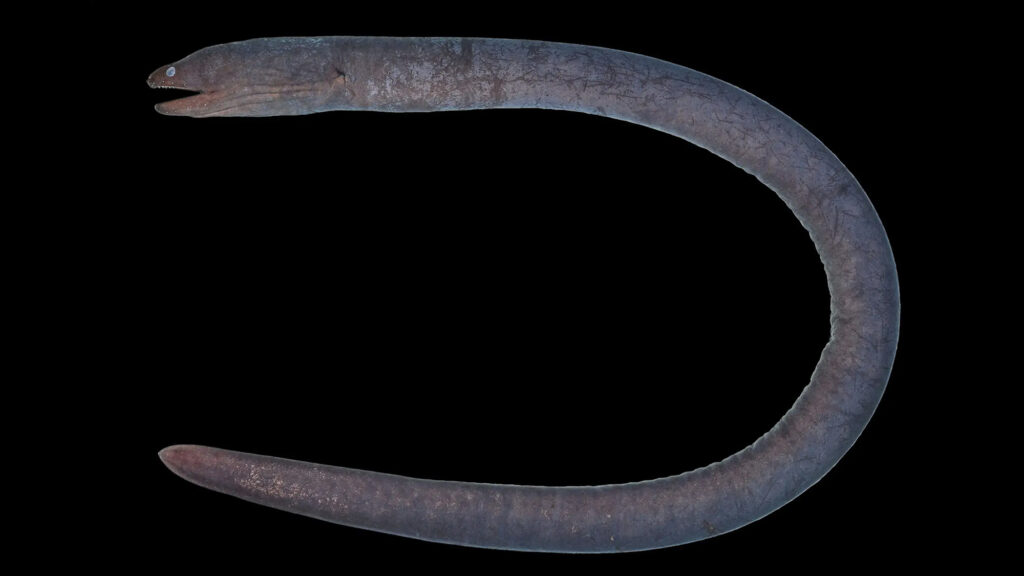[ad_1]
The newly discovered Hades’ snake moray (Uropterygius hades) is right at home in muddy river mouths. This moray eel is dark brown and appears to be an expert burrower. Unlike other moray eels that are brightly colored and live in primarily saltwater environments, Hades’ snake moray can be found in estuaries across southern Japan, Taiwan, the Philippines, southern Java, and Fiji. Its unique features are described in a study published in December 2024 in the journal ZooKeys.

There are roughly 230 known species of moray eels, with most living in salty marine environments. The freshwater moray (Gymnothorax polyuranodon) has been confirmed to spend most of its life in fresh water. The slender giant moray (Strophidon sathete) and a few other species can also tolerate and occasionally enter lower-salinity environments such as river mouths. However, most moray eels specifically adapted to an estuary habitat with mixed salt and fresh water are considered rare.
This new and particularly dark moral eel was also discovered by accident. Three of the study’s co-authors from Taiwan’s National Sun Yat-sen University were investigating a cave of the Puerto Princesa Subterranean River in the Philippines, hoping to survey the aquatic animals in the area and find a different cave eel species, the bean-eyed snake moray (Uropterygius cyamommatus. While they did not find any bean-eyed snake morays, they collected a slender moray with a strange dark color.
They brought several specimens back to their lab and performed DNA testing to see how its genes compared to other known moray eels. While it was in a tank, the team observed that the Hades’ snake moray burrowed tail first. This behavior is rarely seen in moray eels. It also appears to be highly sensitive to light and kept trying to hide when it was exposed to any sort of illumination. Its small eyes are believed to be an adaptation to life in low-light environments. It also has a reduced number of head sensory pores, which the team believes helps the pores avoid clogging.
[ Related: How citizen scientists are protecting ‘glass eels.’ ]
According to the team, its small and sensitive eyes and lack of sensory pores on the head suggests it may rely on its senses of smell and taste–or chemoreception––to sense changes to the chemicals in their environment rather than vision to find food or avoid its predators.This allows the eel to stay burrowed in the mud, yet still find prey and avoid being eaten.
This new moral eel was described by a team of scientists from the National Sun Yat-sen University in Taiwan, Western Philippines University, and Kitakyushu Museum of Natural History and Human History in Japan. They named it after Hades, the Greek god of the underworld, as a way to emphasize its intimidating appearance and its dark and murky habitat. This idea was inspired by study co-author Wen-Chien Huang from National Sun Yat-sen University who was influenced by actor Ralph Fiennes’ portrayal of Hades in the film Clash of the Titans.
[ad_2]
Source link


